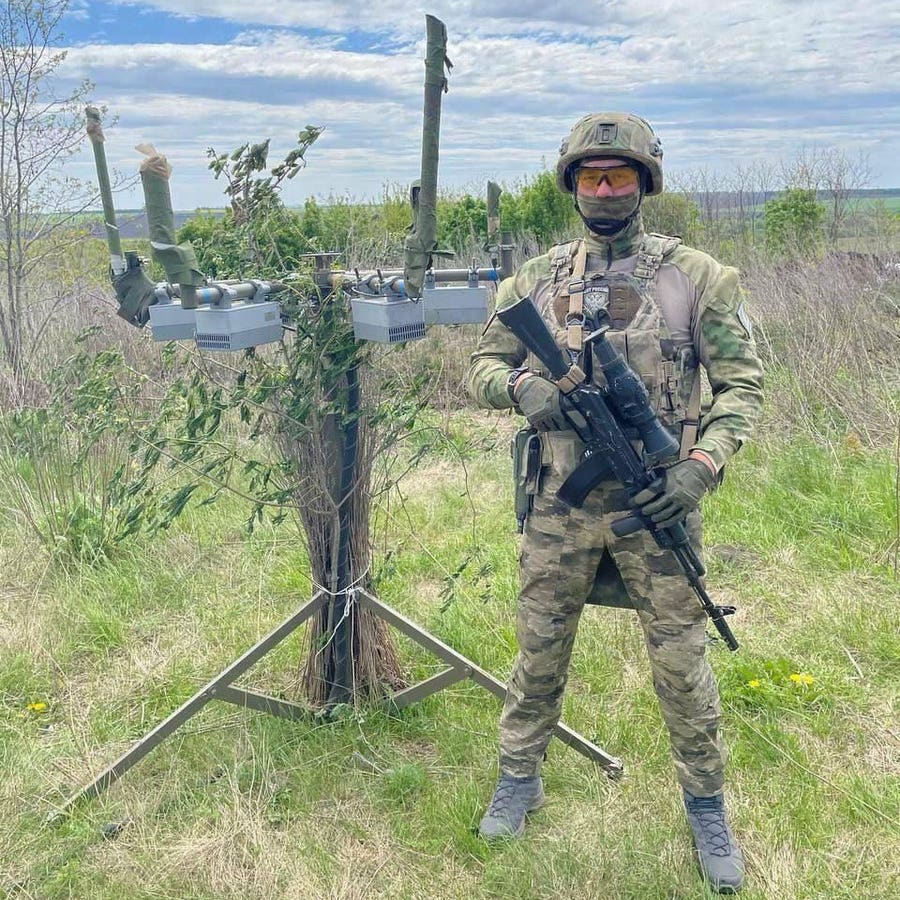Russian force in Ukraine deploy Silok radio-jammers in order to disrupt the radio links between Ukrainian drone and their operators.
But the Ukrainians have knocked out several Siloks. With drones. Most recently, a Mavic quadcopter from Ukraine’s Aerobomber unit bombed, with grenades, a tripod-mounted Silok—apparently destroying it.
Add the drone raids on Silok counter-drone systems to the long, and lengthening, list of ironic operations by Ukrainian forces. Ukrainian artillery blasting a Russian counter-artillery radar. A Ukrainian GPS-guided bomb blowing up a Russian GPS-jammer. And many, many examples of Ukrainian drones bombing Russian drone-jammers.



Preface: I know nothing about weapons except “point sharp end away from self”.
The article has a video. The video shows drones dropping hand grenades at the jammers. The grenades go off (in a spectacularly disappointing fashion compared to what’s depicted in movies, but that’s beside the point) but don’t seem to damage the jammers in any meaningful way. So, do the videos in fact show effective destruction even if it doesn’t look like it?
Post script: I am not a Russian troll. Long live Ukraine! 🇺🇦🖖😎 I am merely not understanding the videos very well.
What you see in movies is bullshit. Any explosion creates a huge fireball and people go flying in every direction. Actual munitions aren’t like that. Especially munitions that have to be carried on light little drones. That includes most hand grenades and air-dropped bombs.
I’m concept, an explosion that creates that big fireball puts most of its energy into spreading burning fuel around to create that big fireball. It’s visually impressive, but not actually very destructive. In warfare you don’t care what it looks like, you want it to be destructive. And the best way to get bang for your buck so to speak with an explosive that has to be lightweight, is with shrapnel. An explosive wrapped in shrapnel is not visually impressive to watch, but it basically sends little bullets flying out in every direction and those bullets are what does the damage.
So consider it this way. If I walk up to the jamming device and shoot it with a pistol, it’s not going to be visually impressive. Nothing is going to fly apart and explode in a shower of sparks and flames. The jammer device might not even move at all, it just now has a hole in it. But it is in fact quite thoroughly destroyed because the bullet from my pistol destroyed all of its internal workings.
Same thing is true with the grenade. The hand grenade is designed to be light and effective, so a soldier can carry it without getting weighed down. Thus it is a small explosive wrapped in a lot of shrapnel. Soldier throws it at the enemy, enemy casualties come not from the explosion but from shrapnel wounds. Drop one of those grenades next to a piece of equipment that isn’t armored, and it may not even appear to move, but it has been quite thoroughly punctured by shrapnel and is thus destroyed.
Hand grenades produce shrapnel. Having loads of tiny holes in it generally isn’t conducive to the functioning of electronic equipment.